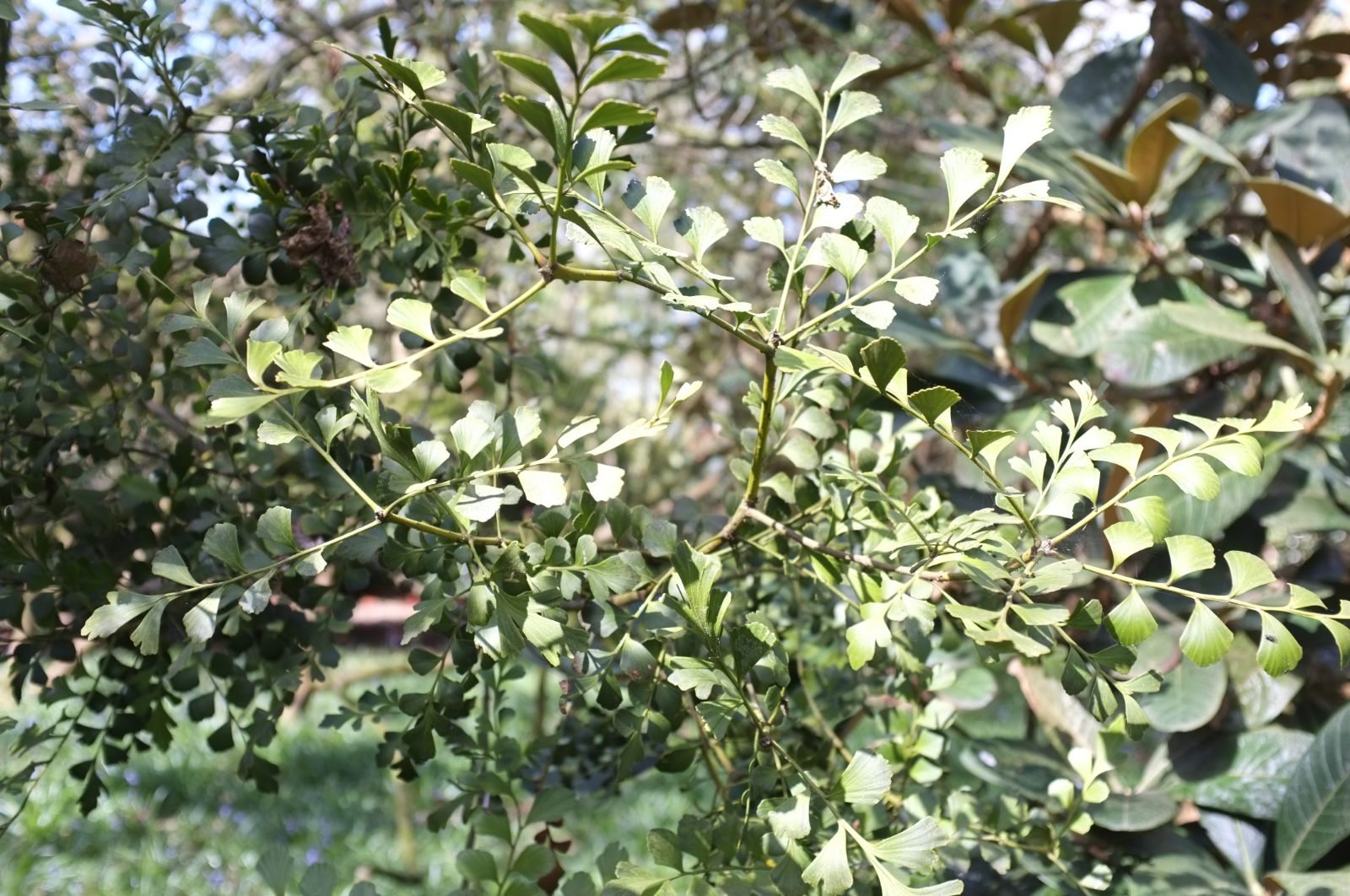Phyllocladus glaucus
Credits
Article from Bean's Trees and Shrubs Hardy in the British Isles
Recommended citation
'Phyllocladus glaucus' from the website Trees and Shrubs Online (treesandshrubsonline.
Genus
Common Names
- Toatoa
An evergreen tree 20 to 30 ft, sometimes more, high, of slender tapering habit, even somewhat fastigiate; branchlets stout, whorled. ‘Leaves’ (phylloclades) arranged on branchlets 4 to 10 in. long in two opposite rows, very leathery, diamond-shaped to roundish ovate, the lower part entire and tapered to a short stalk, the upper part with often three to five shallow lobes on each side, 1 to 21⁄4 in. long, 5⁄8 to 11⁄4 in. wide, glaucous when young, becoming dark dull green. Male flowers in cylindrical spikes 3⁄4 to 1 in. long, produced at the tips of the branchlets. Nuts about the size of radish seeds, ten to twenty of them stuck on one egg-shaped receptacle about 1⁄2 in. long, the nuts half exposed; these take the place of phylloclades towards the base of a branchlet.
Native of New Zealand on the North Island up to 3,000 ft above sea-level. Although most closely akin to P. trichomanoides, especially in the thick whorled branches and frond-like arrangement of the ‘leaves’, this is very distinct. It has the largest ‘leaves’ of any of these cultivated phyllocladuses and they are glaucous when young. As this tree is confined to the North Island, it is likely to be more tender than the other New Zealand species; still it should be hardy in the south-west. It has long been cultivated in the Temperate House at Kew and as far back as 1881 bore fruit there. It is described as a very elegant tree in the wild, but is only one-third the height of its relative, P. trichomanoides.
P. glaucus is certainly very tender. The only specimen recorded by A. F. Mitchell is one of 19 ft × 10 in. on Garinish Island, Co. Cork (1966).
From the Supplement (Vol. V)
In addition to the specimen at Fota, there is another at Mount Stewart, Co. Down, 23 ft high (1976).

